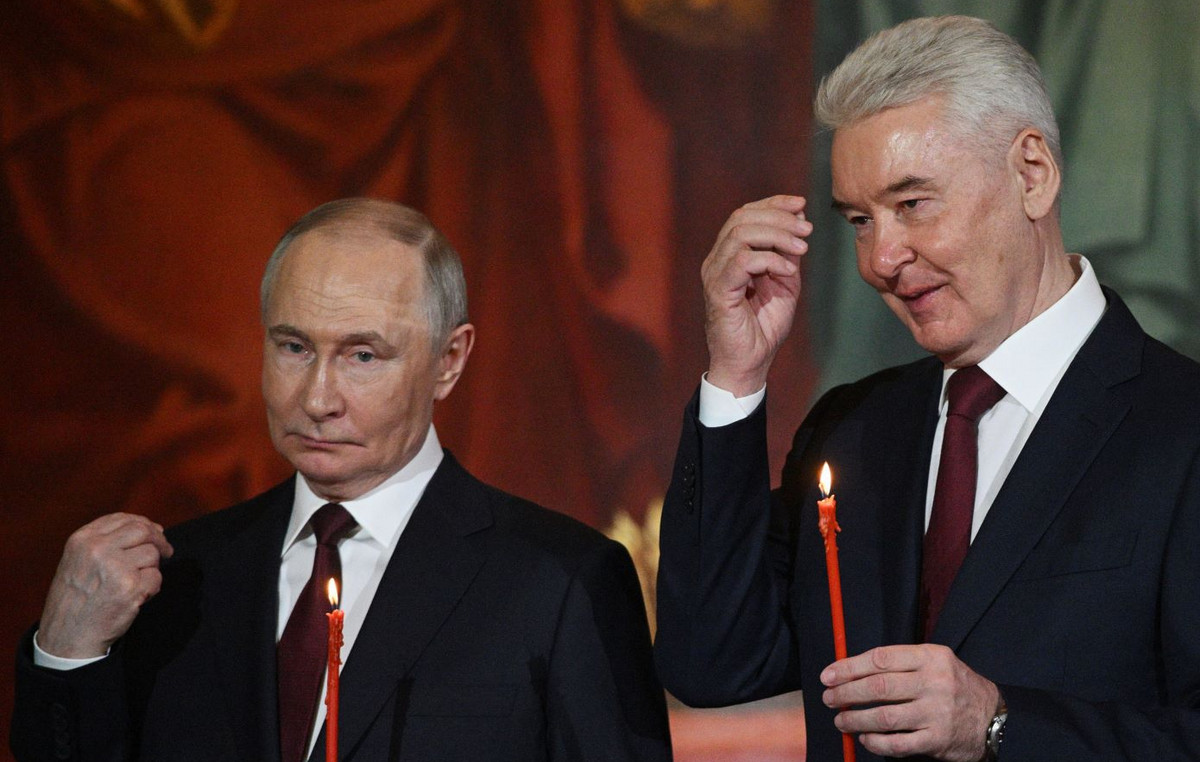Specialists RBC Crypto analyzed the market situation and assessed the prospects for the movement of the Bitcoin exchange rate over the next seven days.
“The news has now been sold”
BitRiver financial analyst Vladislav Antonov
5 key events in the crypto market this week:
- Bitcoin price rises to $48,969.
- Publication and refutation of the SEC's false news about the approval of a Bitcoin ETF, which caused sharp fluctuations in the market.
- Official SEC approval for the launch of 11 Bitcoin ETFs, the price of BTC reached $47,695 (January 10).
- 4. Increased volatility on the first day of Bitcoin ETF trading – an increase to $48,969 and a fall of 6.5% in 2 hours (January 11).
- 5. Continued fall in the price of BTC (January 12) to $41,500, despite interest in Bitcoin ETFs.
The beginning of the week, January 8, was marked by an increase in the price of Bitcoin. The BTC/USDt pair increased by 6.88% to $47,248, breaking through the intermediate resistance around $46,200. This allowed the current high to be updated, but the $50 thousand mark was not reached.
Until January 11, when the SEC's decision on the Bitcoin ETF was expected, growth was expected to continue towards the target zone of $49.5 – 50 thousand. However, already on January 9, the first wave of sales occurred, BTC fell in price by 1.79%, to $46,110. Traders closed part of long positions after false news from the SEC.
On January 10, the long-awaited approval of the launch of 11 Bitcoin ETFs by the SEC took place. This caused a surge in the price to $47,695. However, then a correction followed again due to profit-taking by traders, as well as warnings from the head of the SEC about the riskiness of investing in cryptocurrencies.
On January 11, the first day of Bitcoin ETF trading, there was increased volatility. The price first rushed to $48,969 and then fell 6.5% to $45,606 in just 2 hours. The total trading volume of the new exchange-traded funds exceeded $4 billion.
On Friday, January 12, at the end of the day, the BTC/USDt pair fell by 7.67%, to $42,783. After consolidating at $46 thousand, the price fell by 10%, to $41,500.
Trading launched on January 11 for spot Bitcoin ETFs failed to force investors to buy Bitcoin. In the first two days of trading, the total volume amounted to $7.7 billion, which demonstrated investor interest in cryptocurrencies. On the first day, the volume amounted to $4.6 billion, on the second – $3.07 billion. The largest volume was from three companies: Grayscale, BlackRock and Fidelity.
Despite high volumes, the price of Bitcoin collapsed on Friday. From a high of $48,969 to $41,500, the drop was more than 15%. The sharp price collapse occurred after the opening of redemption options for Grayscale Bitcoin Trust (GBTC) shares due to the approval of the ETF. This created an opportunity for the withdrawal of stranded assets and, accordingly, for the sale of Bitcoin on the open market.
Although the volumes are large, it is not possible to obtain information about the inflow or outflow of funds. Judging by the weakening of Bitcoin, outflows have prevailed. You can evaluate funds in the week of January 19, when more data will be available.
According to my calculations, the “growth phase” ended on January 8, but due to important news, the “decline phase” began with a lag of three days. After the approval of the Bitcoin ETF, investors began to sell BTC. Ethereum came to their attention. The ETH/USDt pair rose to $2,713. The stability of Ethereum is caused by the movement of coins from the ETH/BTC pair. Since sellers broke through the trend line on the daily timeframe, the road to the key support of $40,500 is now open.
The decline phase is due to end on February 10th. According to BitRiver, if bearish sentiment intensifies and buyers give up the $40 thousand level without a fight, then the $36 thousand level will appear on the horizon. Since the crypto market is still low-liquidity, fluctuations of 10-20% in 2-3 hours are the norm. Buyers have begun to lose their grip, but the upward movement is still under their control. Those who want to withdraw money from Grayscale will do so in a maximum of 5 days.
The market may be pessimistic in the near term, but as time goes on, many investors will turn their attention to Ethereum, which has significantly underperformed Bitcoin. Now, while the BTC/USDt pair is correcting, “ether,” based on expectations for the approval of the Ethereum-ETF, should show better profitability in the first half of the year.
To equal last year’s Bitcoin profitability, ETH needs to rise to the area of $3,100 – $3,250.
Increased availability and decreased supply of Bitcoin following the halving could be further signs of growth in the cryptocurrency market in 2024. There are 100 days left until the halving.
Thus, under the influence of volatility caused by important news, Bitcoin ends the week in the red by 2.77%, from the maximum by 12.8%, which is a disappointment for the bulls. The launch of a Bitcoin ETF did not bring the expected effect in the form of a massive influx of funds. Instead, there is an outflow from the market and strengthening of the bears' positions. Bitcoin showed a 155% increase in anticipation of ETF approval last year. The news has now been sold.
The forecast for the next week is negative. Since the price has dropped sharply, we should expect consolidation within 2-3 days. If we don’t go below $40,500, then we can see investor activity on Thursday-Friday.
“Volatility will continue”
Regional Director of the CommEX exchange Anton Toroptsev
The week that started on January 8 was marked by high volatility in the cryptocurrency market. This was due to the expectation of imminent approval of a spot Bitcoin ETF by the US Securities and Exchange Commission (SEC). Bitcoin met the week at $44 thousand, after which it experienced several waves of sharp growth.
The first jump occurred on January 9, when Bitcoin jumped to $47 thousand. The reason was a false message about the approval of a Bitcoin ETF in the SEC account on the social network X. After representatives of the regulator stated that the account was hacked and the message was not true, the Bitcoin rate adjusted , but not significantly – up to $45,500. Market participants by that time were convinced that the Bitcoin spot ETF would receive approval this week.
The next price jump occurred on January 11. After the SEC officially gave the green light to the launch of almost a dozen Bitcoin ETFs, the first cryptocurrency jumped to $48,680. But the enthusiasm of market participants had a short-term effect on the Bitcoin price. The bulls failed to keep the BTC price at $48 thousand, and the rate corrected to the level of the end of December. By the end of the week, Bitcoin dropped to $43 thousand.
Why didn't Bitcoin start to skyrocket immediately after the Bitcoin ETF was approved? The reason is that the current price of Bitcoin has already taken into account the positive effect of the ETF's approval. Rumors that the American regulator intends to approve applications to launch several ETFs at once have been circulating in the crypto market since mid-autumn. Bitcoin owes partly to these expectations an increase of more than 50% since October 2023, when it was trading just below $28 thousand.
In addition, the short-term effect of the news about the approval of the Bitcoin ETF was blurred in time due to the hacking of the SEC account at X (formerly Twitter). In the long term, the emergence of spot Bitcoin ETFs on major US exchanges is of great importance for the crypto market, as it opens up access to cryptocurrencies to a wider audience.
Volatility in the cryptocurrency market is likely to continue in the coming week. The bulls will try to overcome the pressure of the bears, and the range of fluctuations in the price of Bitcoin will expand to $42-47 thousand. At the same time, we should expect an increase in the volatility of Ethereum. Investors' focus is now shifting towards the possible approval of the first spot Ethereum ETF.
The hype around Ethereum has already led to an increase in the ETH price by 15% over the past week. The head of financial giant BlackRock, Larry Fink, said in an interview with CNBC that he “sees value” in an ETH-based spot ETF. In addition to ETH, volatility will affect other altcoins. Once the Bitcoin ETF is approved, investors who took profits and sold Bitcoin at the peak in the middle of last week can direct part of their capital into altcoins.
The macroeconomic situation in the American market will continue to put pressure on the cryptocurrency market. US inflation remains above target and market participants fear the US Federal Reserve will delay its decision to cut its key rate. The next meeting of the US Federal Reserve will take place on January 30 and 31, and most investors believe that following the meeting the Fed will not lower the key rate, but they really hope that this will happen in March 2024. Thus, until mid-March 2024, the cryptocurrency market will be under pressure from aspects of monetary policy in the United States.
Source: Cryptocurrency
I am an experienced journalist and writer with a career in the news industry. My focus is on covering Top News stories for World Stock Market, where I provide comprehensive analysis and commentary on markets around the world. I have expertise in writing both long-form articles and shorter pieces that deliver timely, relevant updates to readers.







